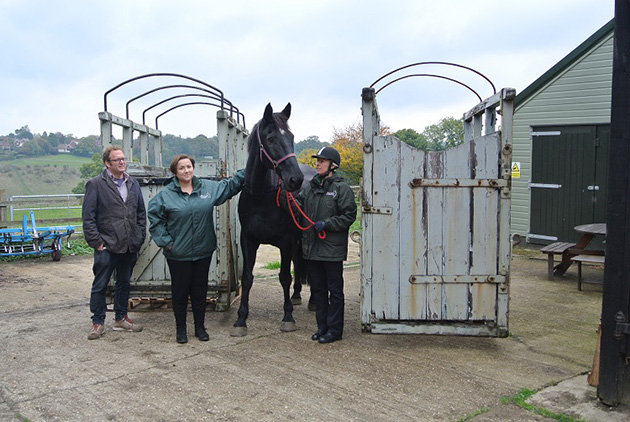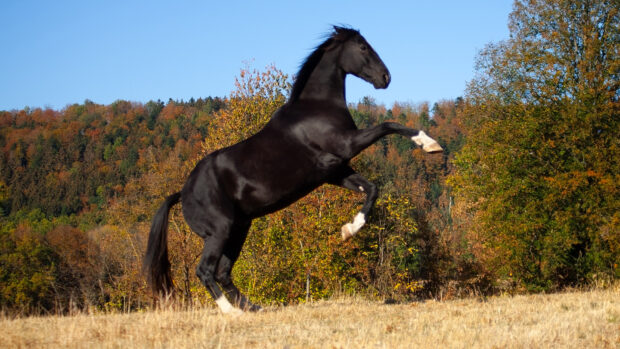Across the country today (11 November), those who have died in the line of duty will be remembered with two minutes’ silence at 11am.
Armistice Day is observed on 11 November to recall the end of hostilities of World War One on that date in 1918 — and the role that horses played during the Great War is something that must never be forgotten.
In 2015, two rare horse–lifting boxes that were used to transport the army horses to and from the frontline, were discovered and subsequently displayed at an exhibition by The Horse Trust at its home of rest for horses in Speen, Buckinghamshire.
Many myths had grown up regarding the fate of the British army horses at the end of the Great War and the welfare of war horses throughout the conflict, and so The Horse Trust commissioned military historian Dr. David Kenyon to research the role of British horses throughout the war years.
When the exhibition was opened to the public in August 2014 as part of the centenary commemorations of the outbreak of war, the trust searched far and wide for genuine artefacts of the period.
After some persistence, Horse Trust Chief Executive Jeannette Allen tracked down this pair of heavy horse-lifting boxes that appeared to have been used in the monumental mobilisation and de-mobilisation.
These sort of boxes offered a much kinder way of lifting horses that would otherwise be hoisted with slings when tides or unsuitable wharves made gang-planks impossible.
It was, by any measure, a herculean task. As they set sail for France in 1914 the British Expeditionary Force in France took 165,000 horses, the vast majority of them requisitioned and collected in just 12 days. It was truly a miracle of organisation and co-operation, but one of the greatest challenges of that mobilisation was the ongoing transportation of the horse to the battlefields in France.
The horse lifting boxes were fundamental to getting the horses to France through east London’s dockyards. Unlike soldiers, horses don’t walk up steep gangplanks very easily, so this sort of lifting box would be hoisted over the gunwales of a ship by crane and lowered into the hold where horses were stabled. Those same boxes were used in 1918 to bring over 60,000 horses back home through those same docks, although many thousands more did not make the return journey.
Thankfully the vendor was able to authenticate their provenance. Anthony Reeve of LASSCO (London Architectural Salvage and Supply Company) explained: “The boxes had come from the Museum of London where LASSCO had helped the Museum of London clear vast stores of non-accessioned collections from the Royal Docks, London. Amongst the anchors, gang-planks and cannon were two large crates — like heavy duty carts without wheels.
“These were ‘horse-lifting boxes’, rare survivors, originally from the London dockyards. With a door at each end, lifting points at each corner, remains of a padded interior and iron hoops over the top, to prevent a horse rearing.”

Wearing your poppy with pride: unusually marked cob is a hit in the show ring

Subscribe to Horse & Hound magazine today – and enjoy unlimited website access all year round
Horse & Hound magazine, out every Thursday, is packed with all the latest news and reports, as well as interviews, specials, nostalgia, vet and training advice. Find how you can enjoy the magazine delivered to your door every week, plus options to upgrade your subscription to access our online service that brings you breaking news and reports as well as other benefits.





